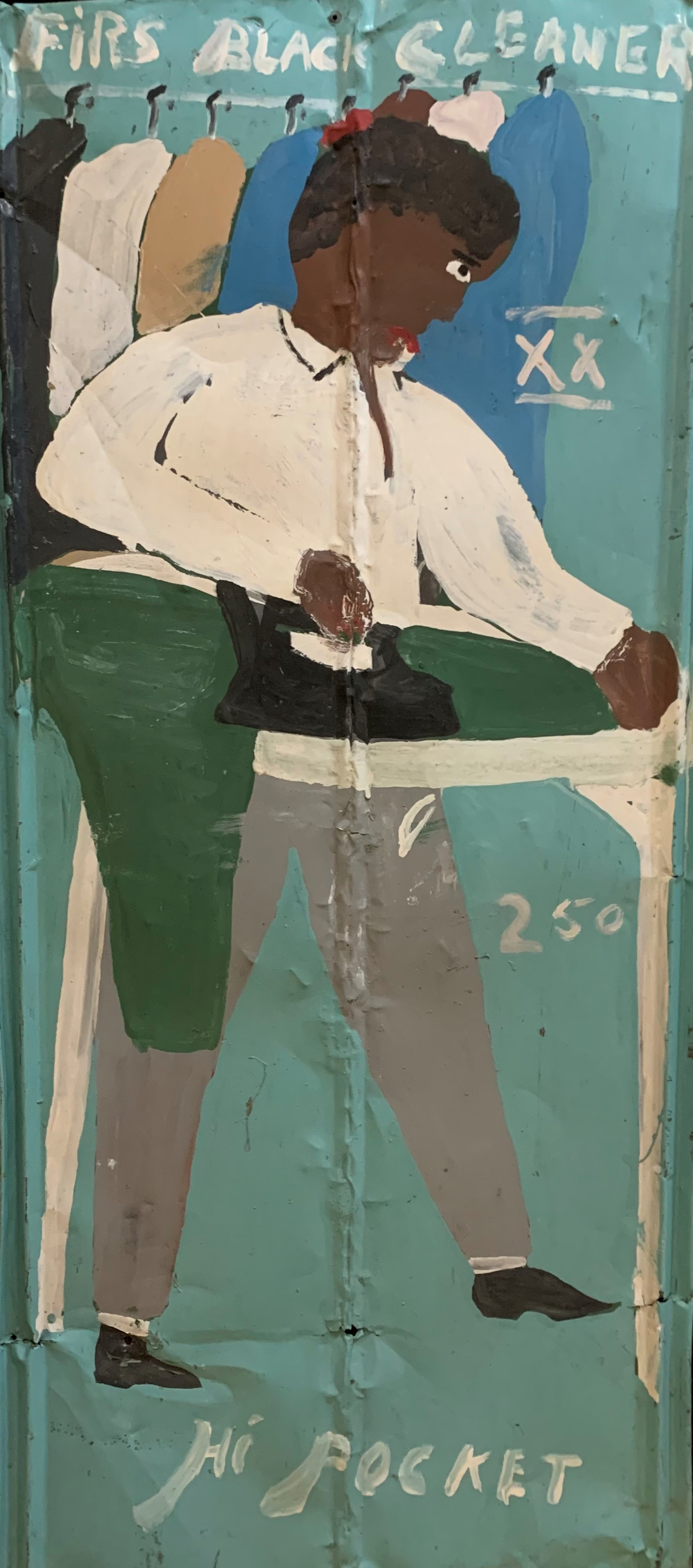Sam Doyle
1906 - 1985
Several of the African American artists that were included at the landmark Black Folk Art in America 1930-1980 exhibit, had previously had their work shown. This was not the case for Sam Doyle, whose work (15 paintings and objects) was being formally displayed for the first time at this now historic show in Washington DC. Born on the island of St. Helena, off the coast of South Carolina, Doyle was one of 9 children in his family who were descendants of freed slaves. Educated at the Penn School through 9th grade, Sam appeared to have a skillset for carpentry and drawing but was forced to go to work turning down an opportunity to go to New York to study art. He bounced around various jobs which included working as a clerk in a Frogmore store, as a porter, and then at the Parris Island Marine Corps laundry. He married in 1932 and had three children; his wife and children would later move up to New York and leave him in St. Helena. When he retired, Doyle considered painting his profession as he documented and chronicled the Gullah life which he felt the responsibility to record what he saw and knew. He most often painted on roofing tins with latex and enamel paint. His paintings are rich in tradition and folklore as he said, “I paint the spirit of the person, yeah.” He would display his paintings under large oak trees facing the road, beckoning people to stop by and see the cast of characters such as Voodoo doctors, local and national athletes, religious figures, musicians, and American pop icons. The cultural tradition of the local dialect of Gullah and voodoo are often replicated in Doyle’s colorful work. Doyle’s dialect was laced with Gullah linguistics combining grammar and speech of both Africa and the Caribbean. In an interview with Barbara Archer, shortly before his death in 1985 at the age of 79, Doyle explained in describing his paintings, “These are some things that happen a long time ago. They want me to get the history the first thing. Well, I go from seventy years ago. Get the history of this island or the things that happened when I was a kid. What I paint is history.” ¹⁰
Sam Doyle © The Arient Family 2021


